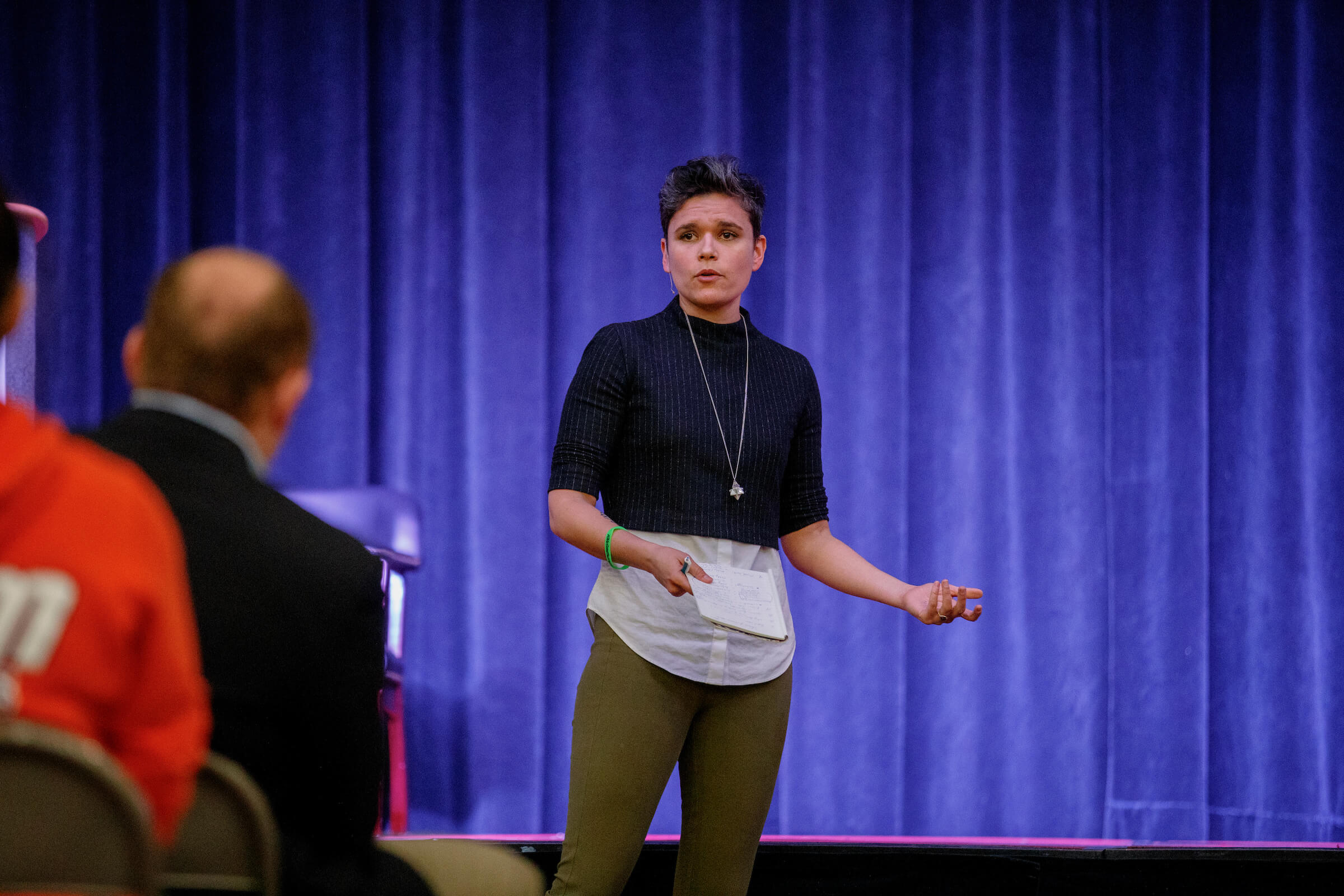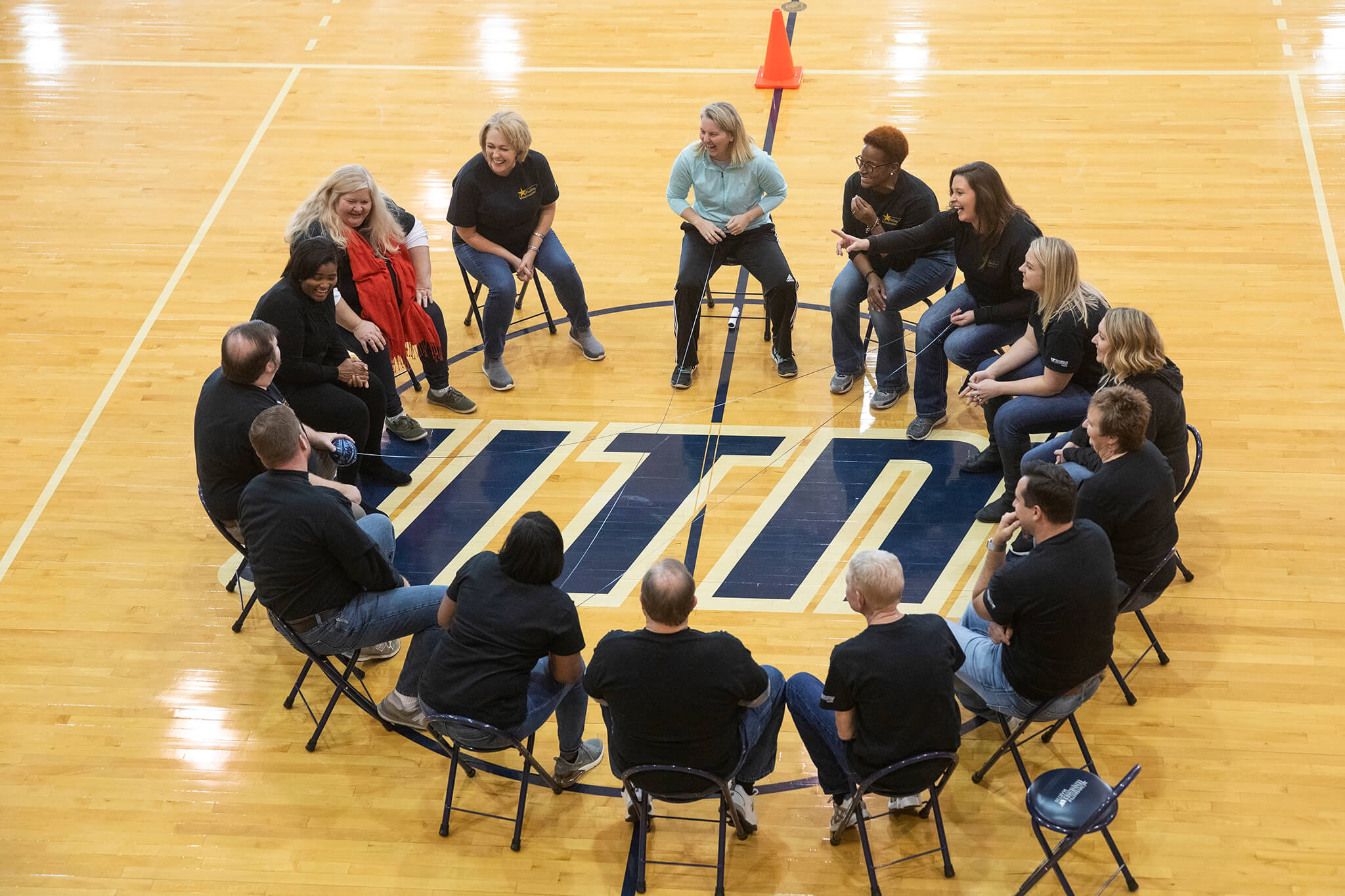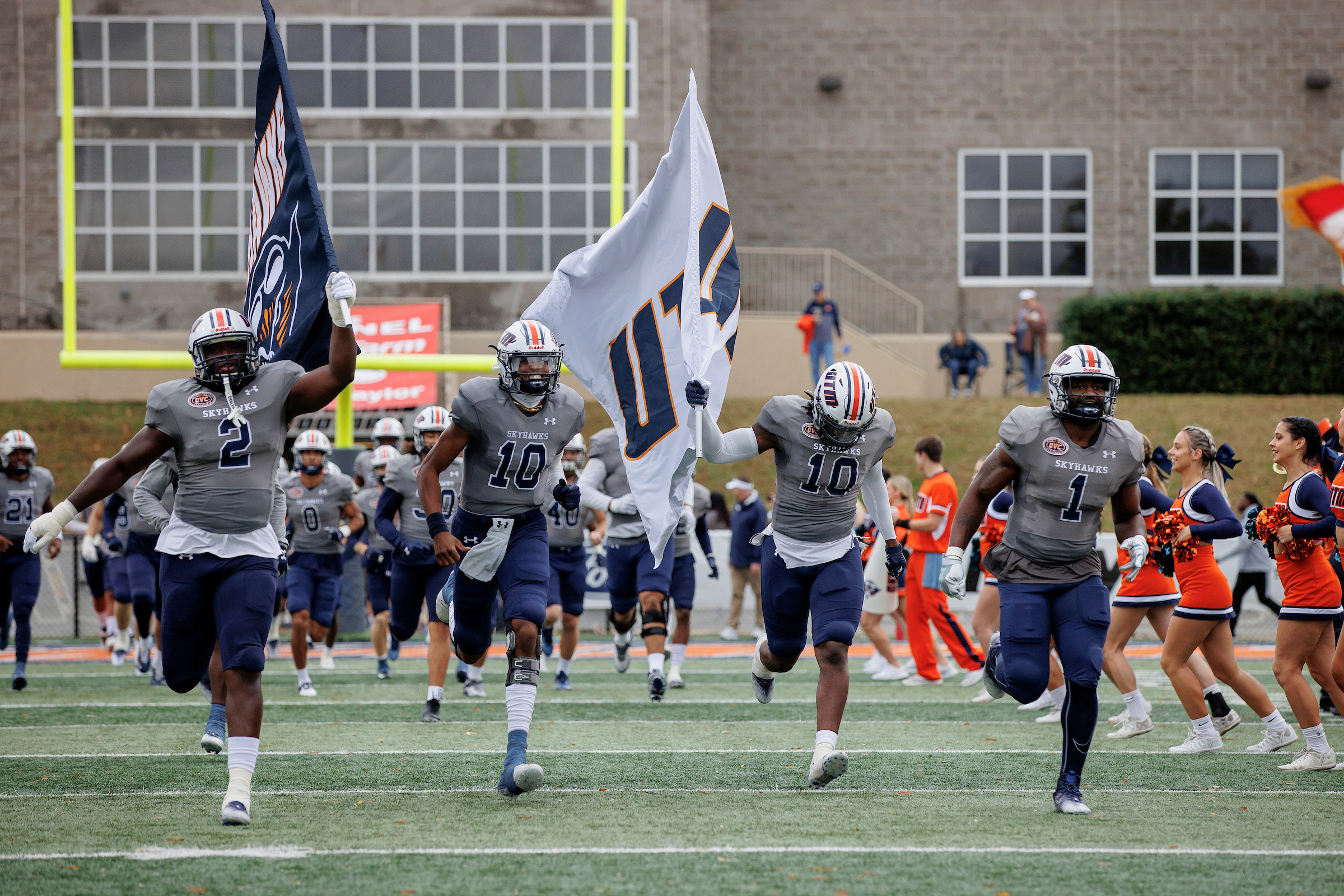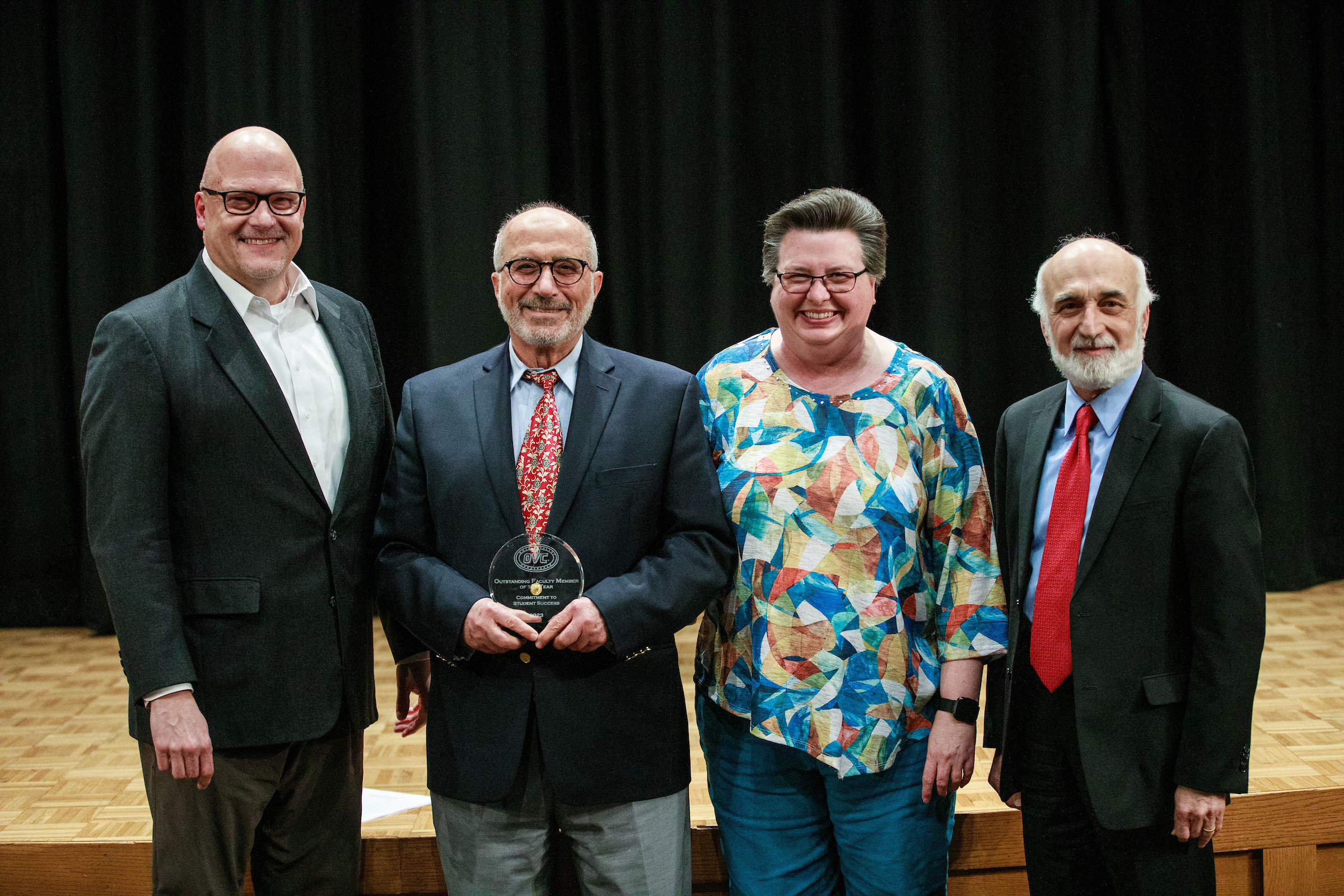Kate Fagan, former ESPN sports journalist and author of the book “What Made Maddy Run,” spoke Feb. 4 to student-athletes and community members in the University of Tennessee at Martin Skyhawk Fieldhouse. She discussed the story of Madison Holleran, an all-star athlete at the University of Pennsylvania, and the mental health issues that can stem from the transition to collegiate life and athletics.
Holleran was a 19-year-old freshman and track-and-field runner at the University of Pennsylvania when she took her own life Jan. 17, 2014. She had struggled with the transition to collegiate life, both in the academic and athletic worlds, and sank into depression during her first semester on campus. That spring, she acted on suicidal thoughts and jumped from the top of a campus parking garage in Philadelphia.
Fagan featured Holleran’s story in an article for ESPN The Magazine titled “Split Image,” which discussed the disconnect between the life one shows on social media and the life one experiences behind closed doors. The response to this article and the accompanying 10-minute video on Holleran prompted Fagan to research and write “What Made Maddy Run.”
“Most of the time, when you put an article out – specifically for ESPN, which is seen as more of a national organization – you don’t get a lot of feedback. You don’t get a lot of emails in your inbox. But after ‘Split Image’ and after this (video) came out, I was flooded with emails,” said Fagan. “The interesting thing about those emails was that they were from high school and college students and student-athletes. … It’s not a typical thing for high school and college-aged kids to do. Those emails had so many more questions about this story, or they wanted to relate how they saw themselves in Maddy to me, or they wanted us at ESPN to focus on more than just the technological piece and some of the cultural pieces (of the story). … So that was really the catalyst for writing the book in the first place.”
“What Made Maddy Run” is not simply a look at the life and death of Madison Holleran. Rather, it examines the technological, cultural and mental health components that influence student-athletes like Holleran all over the world. It also shares Fagan’s own story of dealing with anxiety associated with collegiate sports.
“I played hoops in college (at the University of Colorado) and, as I write about in the book, my first year at Colorado was a struggle for me. It started a couple months into practice where I started ruminating and anxiously obsessing over the next practice the minute the first one ended. Where, it was like ‘Oh my God, I’m only 22 hours from the next time I have to go through this.’ And panic would start to set in. This was going on for probably the better part of a month, just this anxiety building and building,” said Fagan.
This anxiety culminated in a spontaneous decision to take an entire bottle of her roommate’s iron pills in a desperate attempt to make herself sick enough to avoid basketball practice. While she did not become physically ill, she realized that her mental and emotional states needed to be addressed and approached her trainer for help. After several months of counseling, Fagan learned to cope with the stress of life as a student-athlete.
“What was right for me was to continue playing basketball, and I finished my career at Colorado. But I will say to this day that college was the hardest thing I ever did. There’s a lot of things I would go back in my life and I would be desperate to do over again, but playing college basketball is actually not one of them,” said Fagan. “I’m happy that I stuck with it, and I’m very happy that I learned the lessons that I did, but it was a very difficult thing. I think that’s something we don’t talk about enough is the transition to college, whether you’re a student or a student-athlete. I think a lot of people offer up the messaging that it’s going to be the best four years of your life, and for some of us who are lucky it is a great time in our lives. But for more people than we usually talk about, it actually is a time of difficult transition.”
While Fagan says there is no definitive explanation for why Holleran – and so many students like her – took her own life, she says cultural expectations play a part in the final decision. When a student is never required to face failure; sets unreasonable expectations for his or her academic, athletic and social lives; and sees the highly polished photos that others post on social media as “real life,” it can provide an atmosphere for depression to begin. Those with genetic predispositions to mental health issues, like Holleran, are especially vulnerable.
Fagan urged audience members to begin talking about personal struggles and opening the doors to conversations about the challenges of real life and the coping mechanisms all students need to deal with adversity. She stayed after her public presentation for a closed question-and-answer session with UT Martin student-athletes. Dr. Lisa Piercey, former executive vice president at West Tennessee Healthcare and newly appointed commissioner of the Tennessee Department of Health, moderated the discussion.
Fagan’s appearance was sponsored by the UT Martin Student-Athlete Advisory Committee.
###
Additional photos from the event are available below.











